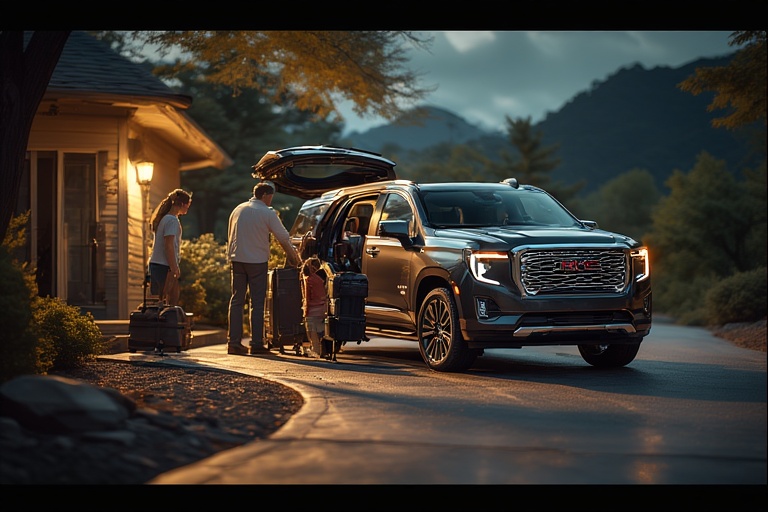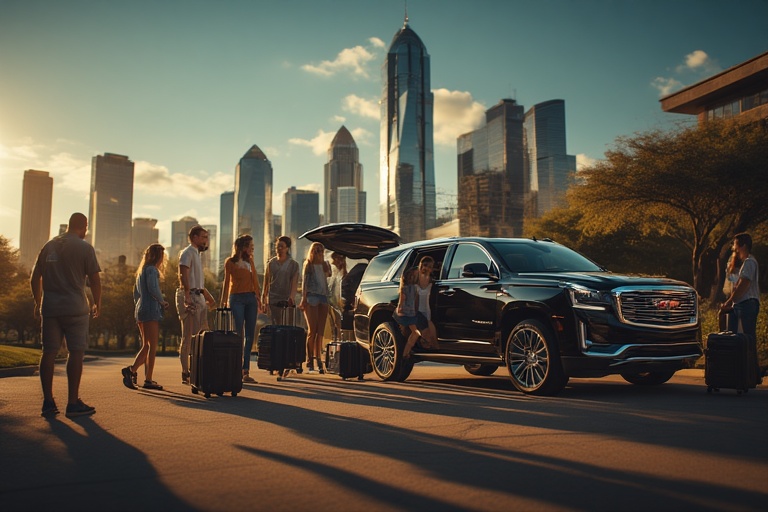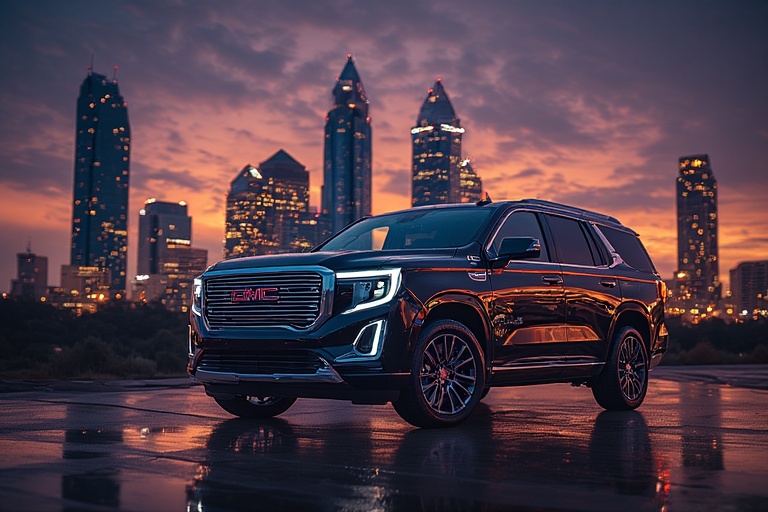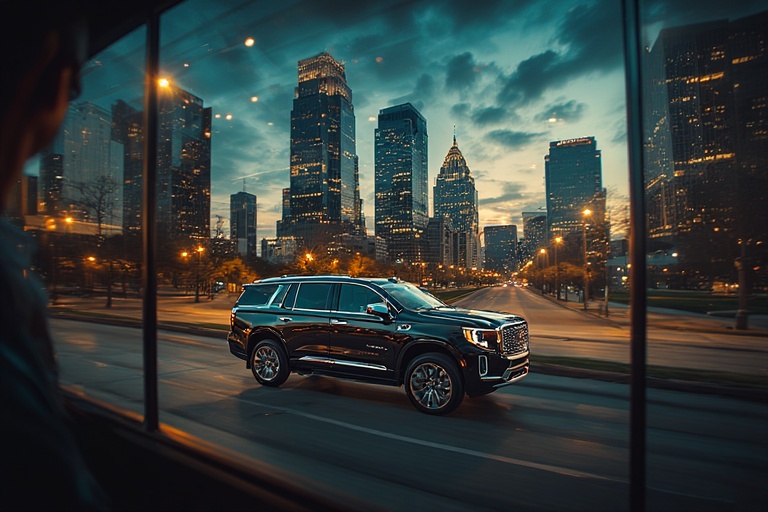Houston SUV Rentals
Determining the ideal cargo space for an SUV on a family trip depends heavily on the family’s size, the duration of the trip, and the type of activities planned. Generally, a larger family undertaking a multi-day trip with outdoor activities will require significantly more cargo space than a smaller family on a short getaway.
For families, the primary consideration for cargo space is often the ability to accommodate luggage, strollers, sports equipment, groceries, and even pets. When planning a family trip, it’s crucial to consider not just the cubic feet of space, but also how that space is configured and whether it allows for easy organization and access to items.
For a family trip, a good starting point for cargo space in an SUV is generally considered to be at least 70-80 cubic feet with the second and third rows folded down, and ideally 20-25 cubic feet behind the third row for vehicles with three rows of seating. This allows for a balance of passenger comfort and the ability to carry essential gear. However, for larger families or trips involving bulky items like camping gear or multiple sports bags, a vehicle offering 90 cubic feet or more with seats folded, and 25+ cubic feet behind the third row, would be more suitable

Here’s a breakdown of considerations and examples of SUVs with ample cargo space:
Factors Influencing Cargo Space Needs
- Number of Passengers: More passengers mean less available cargo space if all seats are in use. For three-row SUVs, the cargo volume behind the third row is a critical measurement for daily use and shorter trips.
- Trip Duration: Longer trips necessitate more clothing, toiletries, and personal items, increasing cargo demands.
- Activities: Camping, skiing, or beach trips require specialized and often bulky equipment (tents, coolers, skis, beach chairs).
- Pets: Traveling with pets, especially larger dogs, requires dedicated space for crates or comfortable areas, impacting overall cargo capacity.
- Strollers/Child Gear: Families with young children will need space for strollers, diaper bags, and other baby essentials.

Examples of SUV‘s with Significant Cargo Space
Many midsize and full-size SUVs offer substantial cargo room, making them excellent choices for family trips. Here are some top contenders based on recent data:
- Full-Size SUVs: These vehicles are typically the champions of cargo space.
- Chevrolet Suburban/GMC Yukon XL: These models offer the most cargo space, with up to 144.5 cubic feet behind the first row. Even with all seats upright, the Suburban provides 41.5 cubic feet.
- Jeep Wagoneer L: This extended-length full-size SUV boasts 130.9 cubic feet behind the first row.
- Ford Expedition Max: Another strong contender, offering 123.1 cubic feet behind the first row.
- Chevrolet Tahoe/GMC Yukon: Slightly smaller than their “XL” counterparts, they still provide impressive space, with the Tahoe offering up to 122.7 cubic feet behind the first row and 25.5 cubic feet with all seats upright.
- Cadillac Escalade ESV: A luxury option with 142.8 cubic feet behind the first row.
- Midsize SUVs (Three-Row): These offer a good balance of size and cargo capacity.
- Chevrolet Traverse: A standout in the midsize segment, offering a maximum of 97.6 cubic feet with both rear rows folded, 56.6 cubic feet behind the second row, and 22.9 cubic feet behind the third row.
- GMC Acadia: Sharing its platform with the Traverse, it offers similar impressive figures: 97.5 cubic feet with all rows folded, 57.3 behind the second, and 23.0 behind the third.
- Toyota Grand Highlander: Provides up to 97.5 cubic feet when all seats are folded flat, and 20.6 cubic feet behind the third row.
- Hyundai Palisade: Offers up to 86.4 cubic feet with the second and third rows folded, 45.8 cubic feet with the second row in use, and 18.0 cubic feet with all three rows in use.
- Kia Telluride: Delivers 87.0 cubic feet with both rows down, 46.0 behind the second, and 21.0 behind the third.
- Honda Pilot: Provides 87.0 cubic feet with the second and third rows down, 48.5 behind the second, and 19.6 behind the third.
- Midsize SUVs (Two-Row): While not ideal for large families needing maximum passenger capacity, these can offer substantial cargo room for smaller families or those who prioritize cargo over third-row seating.
- Subaru Outback: Offers 75.7 cubic feet with rear seats folded and 32.5 cubic feet with them upright.
- Mazda CX-70: Provides 75.3 cubic feet with seats folded and 39.6 cubic feet behind the second row.
- Jeep Grand Cherokee: Offers 70.8 cubic feet with seats folded and 37.7 cubic feet behind the second row.

When evaluating cargo space, it’s important to note that manufacturers’ reported figures can sometimes vary in their measurement methodologies. Some sources, conduct their own consistent measurements to provide a more reliable comparison across different vehicle types.
often measuring to the top of the rear seatback to maintain rear visibility and prevent cargo from becoming projectiles. Therefore, while manufacturer specifications provide a good guide, independent reviews and physical inspection can offer a more accurate space info.

“People Also Ask”
Q: What is the difference between a compact, midsize, and standard SUV?
A: The main differences are size and seating capacity. A compact SUV (e.g., Nissan Rogue) seats 5 comfortably with moderate cargo space. A midsize SUV (e.g., Honda Pilot) often offers optional third-row seating and more legroom. A standard SUV consistently seats 7-8 and provides the most cargo and passenger space, making it the most versatile for Houston SUV rentals.
Q: Can I request a specific model or color of SUV?
A: You can request a specific SUV model when you book. we will do our best to honor it based on availability. However, we guarantee a vehicle in the chosen class (e.g., Standard SUV), not the exact make or model. Color requests cannot be guaranteed due to fleet logistics, but you can note your preference.
Q: Are all your SUVs automatic transmission?
A: Yes, all our SUV rentals in Houston feature automatic transmission. Manual transmission SUVs are extremely rare in the US rental market. You can expect a smooth, easy driving experience with no need to worry about shifting gears in Houston’s.
Q: Do your SUVs have Apple CarPlay and Android Auto?
A: The vast majority of our late-model SUV fleet is equipped with Apple CarPlay and Android Auto. allowing you to seamlessly integrate your smartphone for navigation, music, and hands-free communication. This feature is standard in most current model-year vehicles.
https://houstonsuvrentals.com/wp-admin/post.php?post=671&action=edit
https://houstonsuvrentals.com/wp-admin/post.php?post=668&action=edit
https://houstonsuvrentals.com/wp-admin/post.php?post=664&action=edit
https://houstonsuvrentals.com/wp-admin/post.php?post=662&action=edit
https://houstonsuvrentals.com/wp-admin/post.php?post=660&action=edit
https://houstonsuvrentals.com/wp-admin/post.php?post=658&action=edit
https://houstonsuvrentals.com/wp-admin/post.php?post=656&action=edit
https://houstonsuvrentals.com/wp-admin/post.php?post=656&action=edit
https://houstonsuvrentals.com/wp-admin/post.php?post=648&action=edit
https://houstonsuvrentals.com/wp-admin/post.php?post=644&action=edit
https://houstonsuvrentals.com/wp-admin/post.php?post=639&action=edit
https://houstonsuvrentals.com/wp-admin/post.php?post=637&action=edit
https://houstonsuvrentals.com/wp-admin/post.php?post=635&action=edit
https://houstonsuvrentals.com/wp-admin/post.php?post=633&action=edit
https://houstonsuvrentals.com/wp-admin/post.php?post=631&action=edit
https://houstonsuvrentals.com/wp-admin/post.php?post=628&action=edit
https://houstonsuvrentals.com/wp-admin/post.php?post=621&action=edit
https://houstonsuvrentals.com/wp-admin/post.php?post=607&action=edit
https://houstonsuvrentals.com/wp-admin/post.php?post=604&action=edit
https://houstonsuvrentals.com/wp-admin/post.php?post=590&action=edit
https://houstonsuvrentals.com/wp-admin/post.php?post=588&action=edit
